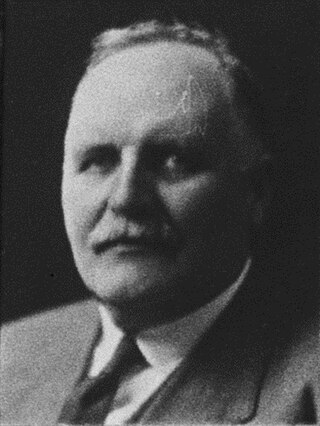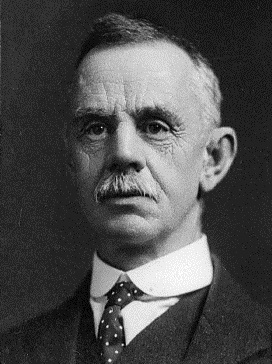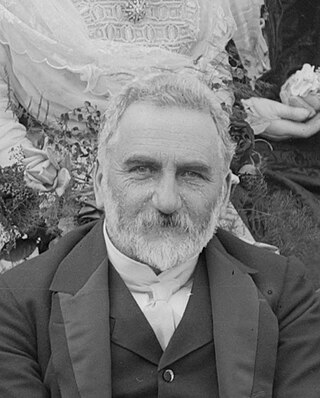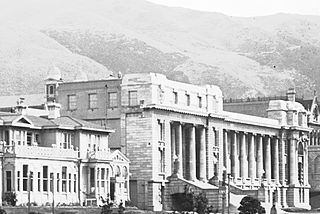| ||||||||||||||||
| ||||||||||||||||
| ||||||||||||||||
The Oamaru by-election of 1923 was a by-election during the 21st New Zealand Parliament. The by-election was called following the invalidation of the preceding 1922 general election result due to irregularities. It was held on 1 May 1923. [1]
| ||||||||||||||||
| ||||||||||||||||
| ||||||||||||||||
The Oamaru by-election of 1923 was a by-election during the 21st New Zealand Parliament. The by-election was called following the invalidation of the preceding 1922 general election result due to irregularities. It was held on 1 May 1923. [1]
When the preliminary counts for the 1922 general election in the Oamaru electorate were announced, Ernest Lee was ahead of John Andrew MacPherson by just one vote. Once the absentee votes had been counted, it was announced that MacPherson was leading by five votes, but this was subsequently increased to 25 votes. A recount was ordered, during which some irregularities came to light, and Lee asked for a judicial review. The court case was heard at the Supreme Court in Wellington by Sir Robert Stout and Justice Alexander Samuel Adams, who declared the election void and ordered the parties to pay their own expenses. [2]
Two candidates contested the seat. John Andrew MacPherson (Liberal Party), who had taken the seat off the incumbent Ernest Lee (Reform Party), again won the vote. [3]
The following table gives the election results:
| Party | Candidate | Votes | % | ±% | |
|---|---|---|---|---|---|
| Liberal | John MacPherson | 4,492 | 52.00 | ||
| Reform | Ernest Lee | 4,147 | 48.00 | ||
| Informal votes | 21 | 0.24 | |||
| Majority | 345 | 3.99 | |||
| Turnout | 8,660 | 94.18 | |||
| Registered electors | 9,195 | ||||
MacPherson won the by-election. At the subsequent general election in 1925, Lee in turn defeated MacPherson. [2]
The Dunedin Central by-election of 1915 was a by-election during the 19th New Zealand Parliament held on 3 February in the Dunedin Central electorate. The by-election was sparked by the resignation of the incumbent, Charles Statham, after irregularities in the counting of the vote during the 1914 general election turned a 10-vote lead for his competitor Jim Munro into a 12-vote loss. There were only two nominees.

The Tauranga by-election of 1923 was a by-election during the 21st New Zealand Parliament in the Tauranga electorate. The seat became vacant due to the death of the sitting Member, William Herries. The election was held on 28 March 1923 and won by Charles Macmillan, who defeated the former prime minister Joseph Ward.
The Franklin by-election of 1925 was a by-election during the 21st New Zealand Parliament. The seat became vacant due to the death of the sitting Member, William Massey. It was held on 17 June 1925. Two candidates contested the seat:

Dunedin North is a former New Zealand parliamentary electorate, which returned one Member of Parliament (MP) to the New Zealand House of Representatives. It was established for the 1905 election and has existed since. It was last held by David Clark of the New Zealand Labour Party, who replaced the long-standing representative Pete Hodgson. It was considered a safe Labour seat, with Labour holding the seat for all but one term (1975–1978) since 1928. In the 2020 electoral boundary review, Otago Peninsula was added to the area to address a population quota shortfall; with this change the electorate was succeeded by the Dunedin electorate in the 2020 election.

East Coast is a New Zealand parliamentary electorate, returning one Member of Parliament to the New Zealand House of Representatives. The electorate first existed from 1871 to 1893, and was recreated in 1999. The current MP for East Coast is Dana Kirkpatrick of the National Party, who has held office since 2023.

Napier is a New Zealand parliamentary electorate, returning one Member of Parliament to the House of Representatives. It is named after the city of Napier, the main urban area within the electorate. The electorate was established for the 1861 election and has existed since. It has been held by Katie Nimon of the New Zealand National Party since the 2023 general election. It was held by Stuart Nash of the New Zealand Labour Party from the 2014 general election until 2023, when he did not stand for re-election.

Nelson is a New Zealand parliamentary electorate, returning one Member of Parliament to the House of Representatives of New Zealand. From 1853 to 1860, the electorate was called Town of Nelson. From 1860 to 1881, it was City of Nelson. The electorate is the only one that has continuously existed since the 1st Parliament in 1853.

Tauranga is a New Zealand parliamentary electorate, returning one Member of Parliament to the New Zealand House of Representatives. The current MP for Tauranga is Sam Uffindell of the National Party, who won the seat in the 2022 Tauranga by-election, following the resignation of the previous MP, Simon Bridges of the National Party.

Whanganui is a New Zealand parliamentary electorate. It was first established in 1860 for the 3rd Parliament and has existed continuously since then.

Ernest Page Lee was a New Zealand lawyer and politician of the Reform Party.

John Andrew MacPherson was a New Zealand politician of the Liberal Party and the United Party.

Thomas William Hislop was the Mayor of Wellington from 1905 to 1908, and had represented two South Island electorates in the New Zealand Parliament.

Waitaki is an electorate for the New Zealand House of Representatives that crosses the boundary of North Otago and South Canterbury towns on the East Coast of the South Island. The electorate was first established for the 1871 election that determined the 5th New Zealand Parliament. It has been abolished and re-established several times and in its early years was a two-member electorate for two parliamentary terms. The current electorate has existed since the 2008 election and is held by Miles Anderson of the National Party.

Waikato is an electorate in the New Zealand Parliament. A Waikato electorate was first created in 1871 and an electorate by this name has existed from 1871 to 1963, 1969 to 1996, and 2008 to the present, though exact borders have often changed.

Eden, a former New Zealand parliamentary electorate, lay in the general area of the suburb of Mount Eden in the city of Auckland.
Riccarton is a former New Zealand parliamentary electorate. It existed from 1893 to 1978, and was represented by eight Members of Parliament.
Avon is a former New Zealand parliamentary electorate. It was created for the 1861 general election and existed until 1996. It was represented by 13 Members of Parliament and was held by Independents, Liberal Party or Labour Party representatives.
Lyttelton is a former New Zealand parliamentary electorate. It existed from 1853 to 1890, and again from 1893 to 1996, when it was replaced by the Banks Peninsula electorate.
Oamaru was a parliamentary electorate in the Otago region of New Zealand, during three periods between 1866 and 1978.

The 21st New Zealand Parliament was a term of the New Zealand Parliament. It was elected at the 1922 general election in December of that year.